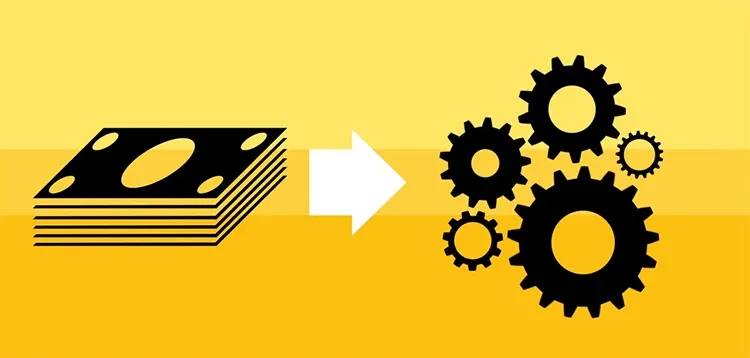Payment Gateways 101: What to Know Before Choosing a Payment Provider

Choosing the right payment processor for your business is one of the most important decisions you make when setting up your ecommerce website. And once you’re up and running, ensuring you have the right payment gateway to suit your business only grows in importance.
To make an informed decision, you’ll need to get caught up on the three Ps of payment processing: players, procedures and pricing.
Who’s Involved in an Online Payment Transaction?
There are three main players when it comes to processing credit and debit card transactions, whether you sell online or in person. On one end is you, the business owner. On the other end is your customer. In between are various technology solutions that connect the two of you.
You, the merchant: To accept credit card payments, you need to partner with a merchant bank (sometimes called an acquirer) who accepts payments on your behalf and deposits them into a merchant account (not the same as a payment gateway) that they provide .
Your customer: For your customer to buy and pay for their order, he or she needs a credit or debit card. The bank that approves your customer for the card (and lends him or her the cash to pay you) is called the issuing bank.
The technology: In the middle are two technologies that enable you and your customer to transact.
The first is a payment gateway, software that links your site’s shopping cart to the card processing network.
The second is the payment processor (or merchant service), which does all the heavy lifting: moving the transaction through the processing network, sending you a billing statement, working with your bank, etc. Often, your merchant bank is also your payment processor, which helps simplify things.
How Payment Transactions Are Processed
As a business owner, it’s helpful to understand exactly how money moves from your customer to you.
There are two stages to payment processing: the authorisation (approving the sale) and the settlement (getting the money into your account).
Here’s how this transaction occurs:
Your customer buys an item on your site with a credit or debit card.
That information goes through the payment gateway, which encrypts the data to keep it private before sending it to the payment processor.
The payment processor sends a request to the customer’s issuing bank asking for the money to pay for your stuff.
The issuer responds with a yes (approval) or a no (denial).
If approved, the payment processor tells you the transaction is accepted, and also tells your merchant bank to credit your account.
This back-and-forth process all takes place within 1–2 seconds.
The second part of the process (where you get paid!) is the settlement:
The card issuer sends the funds to your merchant bank, which deposits the money into your account.
The funds are available. Sometimes, your bank lets you access your money before it’s even sent to them. They also might keep a portion in your account that you can’t touch, just in case there are things returned from customers later (that’s called a reserve, in payments speak).
This half of the process can take a few days.
Payment Processing Fees & Policies
Now that you understand exactly how you get your money from customers via payment processing platforms, let’s address the cost issue.
It’s no surprise that everyone who touches the transaction wants to get paid, including the issuing bank, the credit card associations (Visa, MasterCard, etc.), the merchant bank and the payment provider.
At its most basic, every time you process a transaction, you pay several fees:
Interchange: The issuer gets paid a pre-negotiated percentage of each sale. This fee varies depending on many factors, such as industry, sale amount and type of card used. At last check, there were almost 300 different interchange fees.*
Assessment: The credit card association (Visa, MasterCard, etc.) also charges a pre-negotiated percentage fee, called an assessment.
Markup: Your merchant bank takes a percentage cut by charging you a markup fee, the amount of which also varies by industry, the amount of the sale and your monthly processing volume.
Processing: The payment processor (who might also be your merchant bank) makes money by charging a fixed-rate fee every time you process a transaction — no matter whether it’s a sale, a decline or return. Plus, it can charge fees for setup, monthly usage and even account cancellation.
The above fees are often bundled together, so you can have a tough time figuring out who’s getting what amount of your money.
Beyond the individual fees themselves, there are three different ways processors can structure them as part of an overall pricing plan:
Flat-rate pricing: You pay a fixed percent for all transaction volume, no matter what the actual costs are. All of the above fees are baked into this single rate. For example, you are charged a bundled rate of 2.9% of the transaction amount + $0.30 per transaction. On a $100 sale, the fee you pay works out to be $3.20.
Interchange plus pricing: Your merchant service charges you a fixed fee on top of the interchange — for example, 2% + $0.10 on top of a 1.8% interchange fee. On a $100 sale, that works out to be a $3.90 fee. Remember, too, that there are 300 or so different interchange fees, so the 1.8% can vary wildly.
Tiered pricing: The processor takes the 300 or so different interchange rates and lumps them into three buckets, or pricing tiers: qualified, mid-qualified and nonqualified. This makes it simpler for you (and them) to understand. However, since the processor defines the buckets however it wants, it can be expensive. As an example, the fees you pay on a $100 sale could range from $2.50 to $3.50, depending on how it has been classified.
*For more details on credit card interchange fees, read up on how Visa, MasterCard, American Express and [Discover](https://www.discovernetwork.com/en-us/home/data/acqIntchgLanding.html target=) handle them.

Chase Jones is a marketing director at PayPal, where he leads a team creating payments-related content for small businesses. A grammar and technology geek, Chase holds a Master’s Degree in Communication and has spent over a decade bringing innovative technologies to market for businesses of all sizes.


